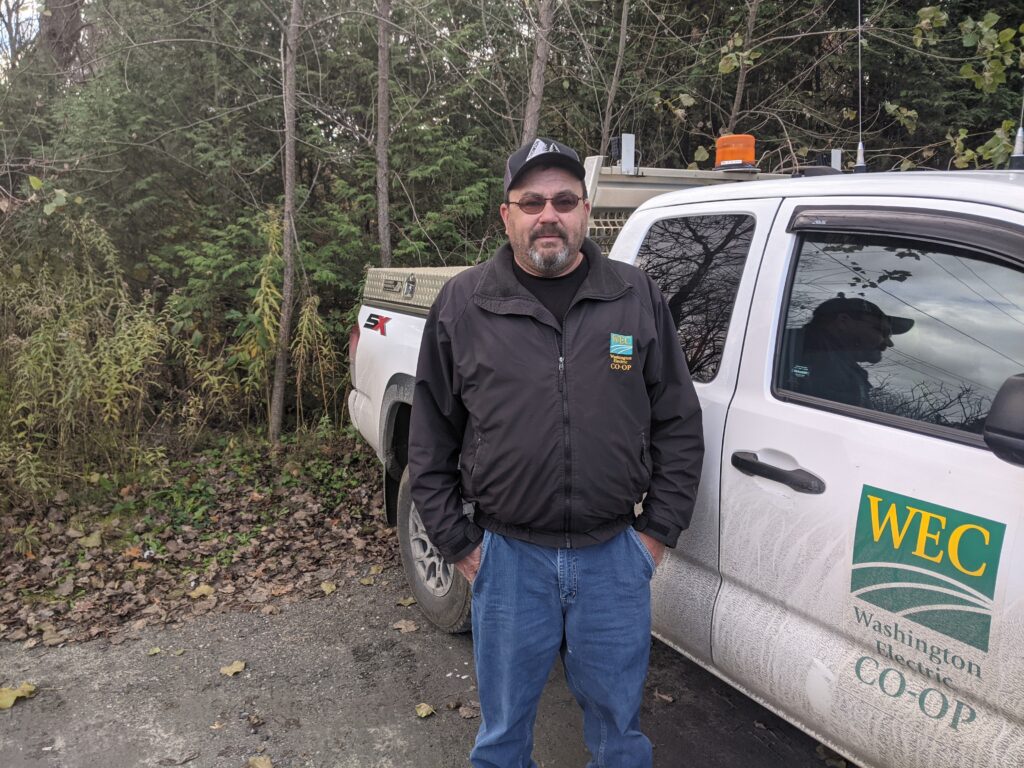
Larry Gilbert, Right of Way Manager
Over 2021, WEC’s operations department felt pinches in the supply chain and labor market just like most other industries. But in an essential industry—distributing electric power—in a rural service area, with storm season upon us, those pinches can have real effects. WEC contracts with several tree crews to help manage vegetation growth in its rights of way. One of those contracts fell through earlier this year, when the company lacked enough workers to fill a crew.
And while preventing winter outages requires vigilant trimming, WEC and community partners are gearing up for broadband rollout, which requires right of way (ROW) maintenance as well.
In other words, Right of Way Manager Larry Gilbert has had a lot of work to do, with fewer workers to do it. “We had limited resources throughout the first eight months of the year,” he said. “Now we’re trying to play catch up with winter coming. It’s been a very busy year.”
But what about the member who calls in a dying white pine dangling over their power lines? The good news is Gilbert hired new tree crews through Asplundh: if you see their orange trucks in WEC’s service area, they’re working for your Co-op.
That new contract allowed him to dedicate one tree crew to attend to trees members call in. These calls are usually about what’s known as “danger trees”. That is, dead, dying, or leaning trees that are likely to fall on WEC power lines. This type of project management is both art and science, and in the interest of efficiency and keeping costs and fuel use down, Gilbert and crews are not always able to give property owners much advance notice as to when they’ll be on their property.
“Say a member calls in a danger tree in Tunbridge,” Gilbert explained. “Moving a crew down there isn’t cost effective until I have a planned job or a call for, say, another tree in Chelsea.” So when the call is made, crews need to act fast.
From a member perspective, that could look like this: you call WEC to report that dying white pine. Several days later, you hear back from Gilbert, and then a few weeks later, the tree is removed. But then, you talk with your neighbor, who called in a danger tree weeks after you did, and had it removed quickly. What gives? Well, perhaps your neighbor’s call made it cost effective for a crew to come remove both trees on the same trip.
Here’s what Gilbert wants WEC members to know:
- He’s listening. He gets your phone calls. But his job requires him to be out in the field for most of each day, often out of cell service. So give him a week or so to call or email you back.
- Your call is in the queue. But when crews can address the issue is affected by multiple factors, including proximity.
Having one crew dedicated to member calls will help reduce some of the backlog, Gilbert hopes. Other crews are working on scheduled ROW cuts, access cuts for new construction, and preparing for broadband rollout. “Broadband has restructured the way we’ve been cutting,” Gilbert noted. The contractors hired by Communication Union Districts (CUDs) for what’s called “make ready” work—preparing poles for new fiber infrastructure—need ROW teams to go through first. These needs vary; some areas are in good shape; in others, poles need to be replaced or installed to shorten spans.
No matter what, ROW work is necessary to prevent outages, improve reliability, and keep members safe. Members can help support this work by:
- Allowing equipment access to offroad rights of way through privately owned fields and yards. For example, WEC’s forestry head mulcher can clear a lot of brush quickly; but if a property owner denies access, crews must do the work, which takes longer and costs more.
- Understanding the nature of danger removal may appear sporadic, but is efficient
- Keeping rights of way clear: not planting tall trees, stacking wood, or storing equipment under power lines.
To learn where scheduled ROW crews are working, look for the “Where’s WEC” column in most issues of Co-op Currents, or visit wec.coop.
